Late last year Trust Across America-Trust Around the World published the first in a planned series of award-winning books. TRUST INC., Strategies for Building Your Company’s Most Valuable Asset brings together the wisdom of 32 experts. Six months later we released our second book, Trust Inc. A Guide for Boards & C-Suites. In this book, sixty experts have joined forces to offer 100 strategies.
Throughout the month of August, we will be featuring 31 essays from our second book. Each stands alone as an excellent resource in guiding Boards and C-Suites on driving a trust agenda at the highest level in the organization, and provides tools for those who choose to implement trust-building programs in their organization.
This fifteenth essay in our series brings advice from Lea Brovedani the President of Sagacity Consulting. Lea’s work focuses on trust through the lens of Emotional and Social Intelligence in business and education. Her book TRUSTED – A Leaders Lesson was published in March 2013. She is a preferred partner with 6 Seconds, a Professional Speaker who travels throughout North America and a master facilitator delivering Train the Trainer programs.
Communication and the Hiring Process
If you want employees to trust the new leader they need to be involved with the hiring. (Article by Dr. Dana Ardi)
Employees should be given as much information as possible on what is happening during the hiring in the C-suite. Yet there are times when every decision can’t be shared, but even that needs to be communicated. Share what you can when you can, and also explain why you can’t.
Listen to what employees have to say. If they have made suggestions that were ignored let them know why. If you don’t, the message that is sent is “I don’t trust or like the quality of your input.” Share why you chose not to follow their advice, whatever the reason.
Communication is an essential skill for trusted leaders and for board members. Communicate that you care by listening and talking to people. Be consistent in the message, committed to communicate not once but until there is understanding and competence in how the message is delivered.
I hope you have enjoyed this next sneak peak into our second book. If this brief look behind the door has been helpful, follow this link to order both of our books online.
August 1: There’s a Reason Why We Call Them Trustees explains why being an “absentee landlord” doesn’t work.
August 2: Kill the Evening Before Dinner and take a small group of front line employees to dinner instead.
August 3: In Head of Business- Hope for the World we introduce the Winston “V” Model.
August 4: Reputation vs. Trust and why leaders should care more about the latter.
August 5: C-Suite Must Speak With a V.O.I.C.E. of Trust, a new communications model.
August 6: It Ain’t What You Do (It’s the Way You Do It) discusses an organization’s core values and traits.
August 7: Superficial CEOs and Their Boards talks about the fiduciary responsibility of board members.
August 8: Headline: Be the Leaders Others Will Follow we learn about consistency between actions and words.
August 9: Towards a Mindset for Corporate Responsibility requiring a shift in mindset on the part of boards.
August 10: Warning: Don’t Drown in the Slogan Swamp explores the (mis)use of slogans in corporate America.
August 11: Trust in the Boardroom in creating competitive advantage.
August 12: Three Ways to Build Trust and organization that are blind to the dialogue.
August 13: Lead from the Front explains why it’s important to remove the filters between leaders and employees.
August 14: Building Trust For Boards & C-Suites and why published scientific evidence is important.
Barbara Brooks Kimmel is the Executive Director of Trust Across America-Trust Around the World whose mission is to help organizations build trust. She is also the editor of the award winning TRUST INC. book series. In 2012 Barbara was named “One of 25 Women Changing the World” by Good Business International.
Should you wish to communicate directly with Barbara, drop her a note at Barbara@trustacrossamerica.com
Copyright © 2014, Next Decade, Inc.
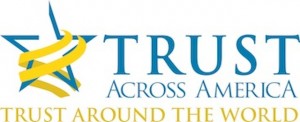
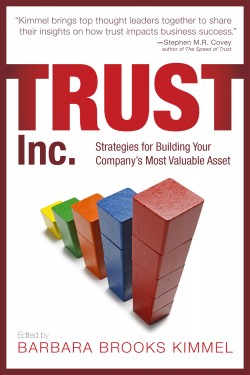
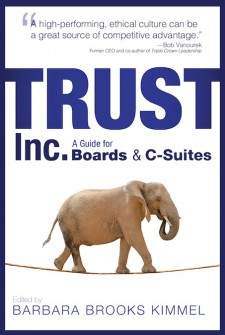
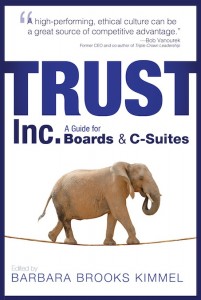
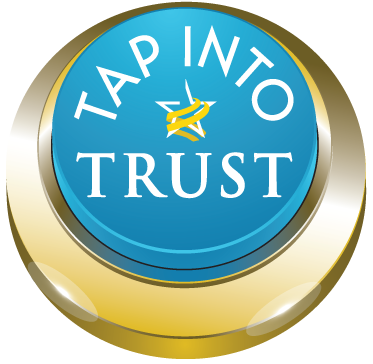
Recent Comments